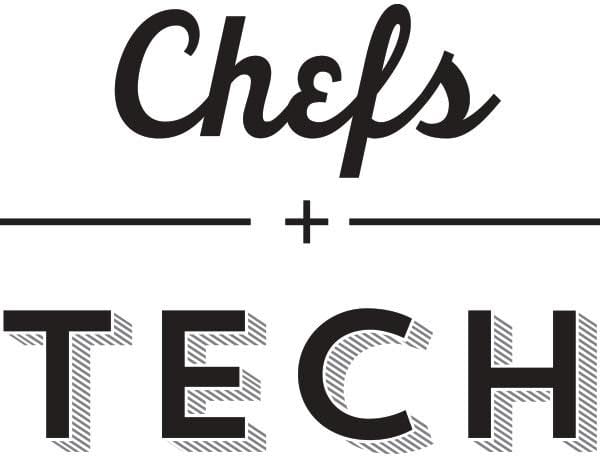Skift Take
Meal kits and delivery may replicate some of the satisfactions of dining out, but a restaurant's value lies in its experience. On top of everything else, restaurateurs must convince us to take the time to visit.
 Editor’s Note: In September we announced that Skift was expanding into food and drink with the addition of the Chefs+Tech newsletter.
Editor’s Note: In September we announced that Skift was expanding into food and drink with the addition of the Chefs+Tech newsletter.
We see this as a natural expansion of the Skift umbrella, bringing the big-picture view on the future of dining out, being fanatically focused on the guest experience, and at the intersection of marketing and tech.
Bonus: We now publish C+T twice weekly.
The Real Competition in Restaurants Is for People’s Time
The biggest challenge facing restaurants isn’t rent or margins or tipping or marketing: It’s competing for customers’ time, according to restaurateur Danny Meyer. Speaking to CNBC, he says: “It’s not that there are so many restaurants that you are competing against. I think you’re competing for people’s time.”
In a short clip accompanying the article, the CNBC host says that restaurants have to compete with the price of food and meal kits at grocery stores, which isn’t an apples-to-apples comparison. Much of the restaurant business — at least the business that Meyer is in — is about the experience, not a cheap meal. (Even Shake Shack, his fast food chain, prices its food above the typical fast food restaurant; $5.55 for a burger and $2.99 for an order of fries.)
“Going out to eat is something that’s always worked for people for three major reasons,” says Meyer, listing them. “I don’t feel like cooking, I don’t feel like doing the dishes, and I want to have a social environment that transports me to a place other than my home.”
This quote articulates the difference between all of the tech-enhanced food ordering and delivery products and traditional restaurants, from fast food to fine dining. But yes, he’s right. While grocery stores and delivery apps may not be in direct competition with a restaurant’s food offerings, they are grabbing a larger portion of diners’ time, whether that’s because they’re new, trendy, or convenient. Now these technologies are seeping into restaurant operations, largely to streamline the business, but also to please time-crunched guests. Meyer and his company, Union Square Hospitality Group, have embraced restaurant technology from the beginning, but his focus remains squarely on crafting memorable dining experiences — in fact, the New York Times writer Florence Fabricant called Meyer a “prolific restaurateur” in his profile of his just-announced new restaurant project. High praise. But this differentiation is key to how we think about the business of restaurants: The goal is to capture a customer’s time. Technology — in the kitchen, in the dining room, and in the hands of the diner — is the ticket to doing this.
New York Rent Is Too High for Fine Dining Restaurants
Well this is… ironic. Successful, even iconic New York City restaurants are getting priced out of the neighborhood, according to a Bloomberg report. Using New York’s Union Square as its proof, the piece details the loss of Union Square Cafe and, soon, Republic [thank you for feeding me during college, Republic!] and Blue Water Grill, whose “fair market value” rent will jump to $2 million per year. “Even though this is one of New York’s most successful restaurants, it can’t be successful with a $2 million plus rent,” says a Blue Water Grill rep in the piece. Plenty of areas are feeling the exodus, including Brooklyn’s Smith Street and Bleecker Street in the Village, it says.
So who can afford the skyrocketing cost of a storefront? Chain restaurants and flagship locations that benefit from high volume. For places like Smith Street in Carroll Gardens, where chains were once unwelcome, this currently translates to empty storefronts. For Union Square, this means chains like Starbucks and Dylan’s Candy Bar. (I guess there’s a reason the Times Square restaurants are what they are.)
So where does this leave us? Ah, glad you asked, because the future is… food halls. If you’ve been following along, this isn’t a surprise. Food halls allow restaurants and food producers to operate with lower overhead and more agility — ”If the landlord takes someone and no one wants their food, after a couple of months they can just say, ‘Hey, I can’t pay my rent,’ and leave,” says one New York real estate broker. It seems David Chang is right and small restaurants are a dying breed, at least in high-rent New York.
Poke Bowls Are the Hottest Ticket in Delivery Right Now
One of the great things about digital ordering is the ability to quickly analyze a huge set of data to identify real-life, data-backed trends. If you’ve read any food news in the last year, you’ve heard of the poke bowl, a Hawaiian dish made with marinated raw fish mixed with other ingredients like avocado and seaweed. According to Bloomberg, 300 new poke restaurants have opened in the US over the past two years.
Grubhub just released statistics from the first month of 2017, and it appears poke delivery is taking over, with a 365 percent increase in orders placed year over year. So if Grubhub delivered 10,000 poke bowls last year, they’re on track to deliver 46,500 this year (I’m just making these numbers up to show scale, I’m sure they’re much higher in reality.) Poke fever!
This is also a testament to diners’ trust in delivery services. Poke can be made from a lot of things, but perhaps most famous is ahi tuna poke — raw fish. Grubhub works to educate its partner restaurants and drivers on the specific food safety measures applicable to delivery, including setting realistic delivery boundaries and providing proper containers for their products (including insulation) to keep hot food hot and cold food cold (and hot and cold food separate!)
Other first-half-of-the-year trends Grubhub has pulled from its over 55,000 restaurant partners: vegan food (up 19 percent); bowls of all types (up 32 percent); and something you probably don’t need to hear from Grubhub to believe: avocado toast (up 93 percent).
Digestifs:
- Bobby Flay’s ready to license Bobby’s Burger Palace — Restaurant Hospitality
- Up next, UberEats chopper? — @UberEats on Twitter
- Rats! Now a group of shareholders is suing Chipotle over its sliding stock price. — Eater
The Daily Newsletter
Our daily coverage of the global travel industry. Written by editors and analysts from across Skift’s brands.
Have a confidential tip for Skift? Get in touch
Tags: food and beverage, skift table
Photo credit: Accomplished restaurateur Danny Meyer says that the real competition in restaurants is for people's time. Alan Diaz / AP Photo
